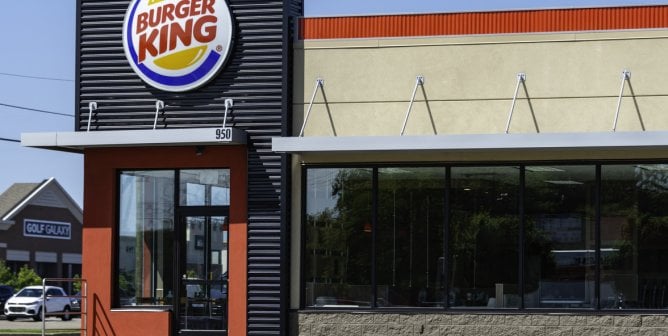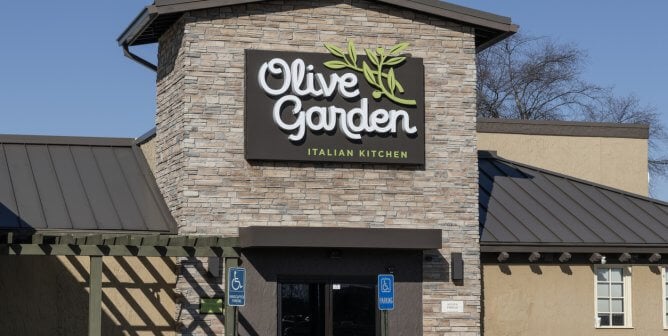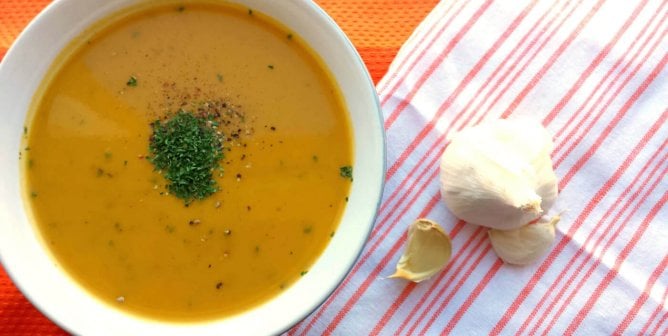Whether you’re a student, an adult living paycheck to paycheck, or a parent feeding a family, it can be difficult living on a tight budget. But even if you have little or no disposable income, eating vegan can help you stretch your budget a little further, make you a more creative cook, and inspire your friends and family to follow your compassionate lead. Most importantly, you’ll save nearly 200 animals per year by going vegan. I bought all my healthy vegan meals from the discount store (my local 99 Cents Only) for one month with a budget of just $100. (Spoiler: I survived!) Here’s what happened.

I’m not ashamed to admit that I have expensive taste when it comes to food. Like many other millennials, I like trying new restaurants and buying cute meals that I can show off on Instagram. Admittedly, I’ve never been good at setting a budget for groceries or limiting how often I go out to eat. My regular weekly food shopping budget exceeds $100, considering my countless trips to Whole Foods, Trader Joe’s, and my local farmer’s market. I’ve been vegan for a few years, and I find myself frequently telling veg-curious friends that being vegan isn’t expensive—while my personal shopping and eating habits tell a different story! For me, this experience was about proving to myself and others that a low-budget vegan lifestyle is not only possible but also easy and satisfying.
WEEK ONE
I entered the first week of the challenge with a sense of naïve excitement, which quickly turned into terror as I entered my local 99 Cents Only store and realized that there probably wasn’t going to be any vegan ice cream. Still, I felt optimistic that I could make the most of the first $25 of my budget as I wandered around the store, missing the familiar aisles of Whole Foods.
Week One Shopping List
1 bag frozen strawberries
1 jar powdered turmeric
1 package raw ginger
1 bag raisins
2 cans refried beans (organic)
2 bags frozen stir fry mix (peppers and onions)
1 package soyrizo
1 carton WestSoy soy milk
1 bunch bananas
1 jar banana peppers
1 package mini corn tortillas (30 for $1!)
1 bottle hot sauce
1 package frozen puréed mango
1 package oats
1 bag bagels (4)
1 jar peanut butter (organic, amazingly)
1 bag pasta
1 jar marinara sauce
2 avocados (also organic! WHAAAT?)
1 box tomatoes (4)
1 bag cabbage (shredded)
1 bottle apple cider vinegar
Throughout the first week, I felt very out of my element, but I knew that adopting a routine would make the transition easier. For breakfasts, I alternated between oatmeal with raisins and bagels with peanut butter and sliced bananas. My lunch was the same all week and consisted of refried beans, veggies, and hot sauce. Despite being a little boring, it worked well because it was filling and quick to make in the microwave at work. For dinner, I cooked some of the soyrizo (which I almost missed seeing at the store because it was in the creepy frozen-meat section) with frozen vegetables, warmed-up tortillas, and made tacos that I topped with cabbage, banana peppers, hot sauce, and avocado. I ended up making these every night until Friday, when I got bored of tacos and decided to cook some pasta with marinara sauce. I added the last of the soyrizo to the pasta sauce, which gave it more substance and added a spicy kick. I also added the last of the frozen vegetables to the sauce.
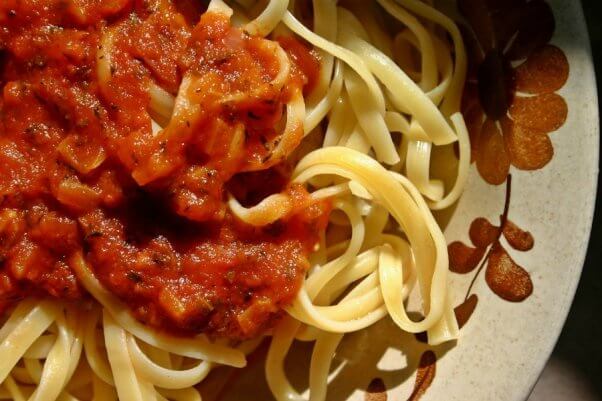
In addition to my three daily meals, I like to treat myself to juice or a smoothie at least twice a week at a local juice bar. At about $7, they’re pricey, but I enjoy them. To fill the void, I broke out my blender and used approximately 75 cents worth of ingredients (1 banana, 6 strawberries, 1 cup of soy milk, and 1/8 cup mango purée) to whip up a delicious, nutritious, and very Instagram-worthy smoothie!
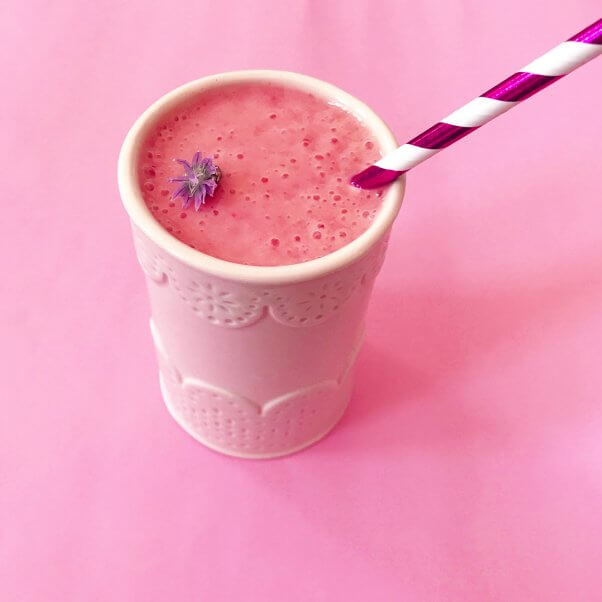
I normally go out to brunch on weekends, where I pay upwards of $9 for avocado toast and another $5 for a fancy latte. I’ve gotten so accustomed to this routine that I woke up on Saturday morning craving my usual meal. Thankfully, my avocados were ripe and ready to be spread on a toasted bagel. I used half an avocado and one bagel from a bag of four and then whipped up a latte with some soy milk, turmeric, and ginger. In total, my whole meal cost less than $1.25! This moment of enlightenment was the first of many—even my favorite restaurant meals could be made at home for a fraction of the cost.
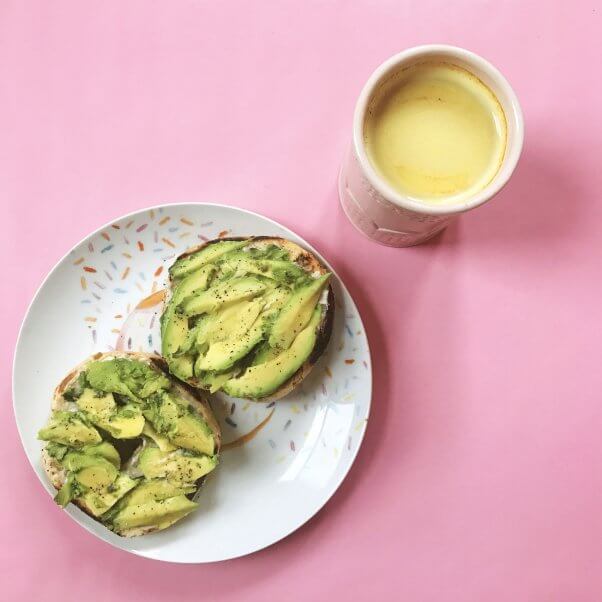
I was surprised to find that I ended up with a lot of food left over after the first week. There was never a point at which I was hungry, but there were several times when I craved my favorite foods and food-related habits, like stopping by the grocery store just to see what’s new in the snack section or buying one of the prepared vegan lunches that my office often orders. After just one week of surviving and thriving on my new low-budget vegan routine, I was reminded of how frivolous and unnecessary these habits really are. Sure, I had to get a little more creative in the kitchen, but that was proving to be much more fun than I’d expected.
WEEK TWO
After eating a lot of carbs during my first week, I entered my second week intending to make lots of salads. Thankfully, 99 Cents Only came through with heads of butter lettuce and hearts of romaine in the produce section. I learned that it frequently gets the “ugly” produce that other grocery stores pass on—but it also sometimes gets overstock, which is exactly the same produce that larger chains sell, at a much lower price! I stocked up on some of the same staples that I’d bought in Week 1 and balanced out the breads and grains with plenty of veggies. I even discovered a whole section of bagged salad toppings (croutons, crispy onions, etc.), many of which were “accidentally vegan”! I celebrated the first night of week two with a fridge full of groceries and a huge, beautiful salad, and I continued to make variations of this salad throughout the month.
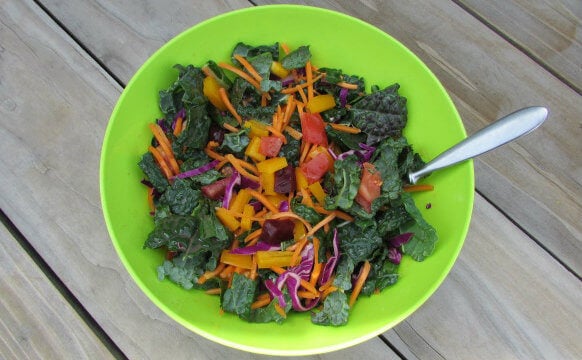
Week Two Shopping List
Oats
2 cartons soy milk
1 bag cucumbers (2)
1 bunch bananas
2 heads butter lettuce
1 box tomatoes (4)
1 package frozen veggies
1 bag frozen veggie potstickers
1 tube soyrizo
1 bag frozen blueberries
1 package zucchini (2)
1 bag potatoes (6 small)
1 package dried coconut
1 can pea soup
1 package plain bagels
3 avocados
1 carton macadamia milk
1 bag shredded carrots
1 bag raisins
The fact that I could find these staples at my local 99 Cents Only store was great, but I wanted to make sure that the experience I was having wasn’t solely because of where I live (Los Angeles). For purposes of comparison, I called on a friend from back home, the cold state of Maine. She was willing to check out the food selection at her local Dollar Tree. Not only did she find four out of six of my “staple” items (bagels, oats, bananas, and refried beans), she also found pasta and vegan marinara, loaves of vegan bread and tortillas, and jars of coconut oil. Plus, she found a few things that I hadn’t found at my location, such as large packages of dried fruit, a larger variety of vegan canned soups and broths, cereals, and even some vegan Italian ice popsicles in the freezer section!
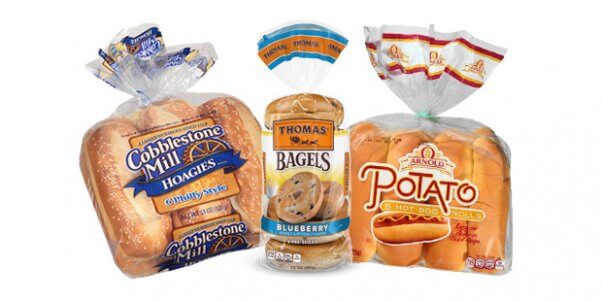
While it was becoming increasingly clear that I could get everything I needed, I couldn’t deny that there were still things that I wanted. Cravings are real, and here’s how I dealt with them:
- I really wanted an acai bowl (which is normally about $8 at a restaurant), so I compensated by making a really pretty blueberry smoothie bowl with ingredients totaling less than $1.
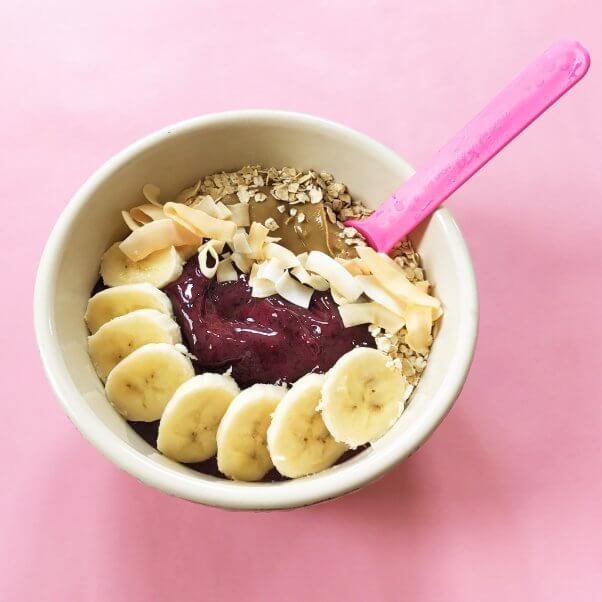
- I had a craving for Asian takeout, so I cooked up the package of frozen veggie potstickers from the freezer section. For $1 potstickers from a discount store, these were extremely good when served over a slaw of shredded cabbage and carrots. I made a dipping sauce with some soy sauce and ginger.
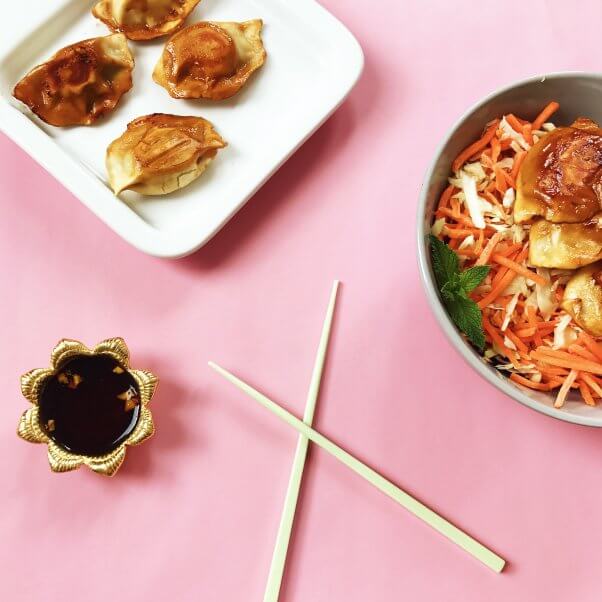
My $25 a week budget was proving to be more than I needed to stay full and healthy and even satisfy my cravings! In fact, at the end of the second week, I found that my refrigerator was overflowing with extra veggies that I didn’t get around to finishing—as well as rice (which I’d cooked a whole bag of) and half a jar of tomato sauce. When I mixed all these things together and put some bread crumbs (made from toasted bagels put through my food processor) on top, I had a casserole that would feed me for a few meals. This challenge was beginning to make me feel like a vegan iron chef! I know I have it easy because the only person I have to feed is me, but meals like casseroles are ideal for feeding a whole family—and they can be easily made with inexpensive ingredients.
WEEK THREE
Weeks Three and Four Shopping List
Oats
2 cartons soy milk
1 bag potatoes
2 bags bagels
2 avocados
1 watermelon
1 box tomatoes (4)
1 box bran flakes cereal
1 box green tea (mint)
Lots of vegetables
Bananas
Unsweetened apple sauce
1 bag rice
1 bag brown sugar
1 bag flour
2 cans black beans
1 tube soyrizo
1 bag mixed peppers
I entered week three feeling like a seasoned pro. Not only was I now craving things that I could easily make with ingredients from the 99 Cents Only store, I was also feeling proud to have made it to the halfway point. Never in my adult life had I spent less than $50 on two weeks of groceries until this challenge, and it was empowering and exciting to see that I could live that way, especially since I frequently tell people that eating vegan doesn’t have to be expensive. The budget that I had set was proving more than sufficient, and in the first weeks of sticking to it, I discovered some helpful hacks that made my cooking simpler and yummier:
- As soon as I found pure powdered cocoa in the baking section, I knew I could make a healthy dessert that was just as rich as the ones I usually pay $5 a pint for at Whole Foods. I was so right.
- Mixing coconut oil with a little bit of salt is a perfect substitute for vegan butter in any recipe, and it can be spread on toast or a bagel or mixed into veggies, rice, pasta, and more. I added some garlic powder to it and made awesome garlic bread to go with my pasta.
- Cheap canned soup may not be that exciting, but it can be a great starter for a homemade soup or stew. Just add equal parts water and canned soup to a pot, bring it to a boil, and add chopped onions, potatoes, and any other vegetables and spices. Boom—you have about four servings of healthy and hearty soup.
- Anything can become a casserole. Just arrange practically any leftovers in a baking dish and add some layers of pasta, rice, tortillas, or even big strips of vegetables. Top it off with some kind of sauce, bake it up, and you’ve got yourself a casserole. Give it a name, and suddenly it’s your famous recipe.
- You can freeze leftovers instead of throwing them away.
- Vegan snacks are hiding everywhere! I thought I wasn’t going to get my snack fix—until I started actually reading labels. There are tons of “accidentally vegan” junk food options hiding in plain sight at local discount stores. You can find vegan chips, candy, nuts, and cookies—you just need to read the labels.
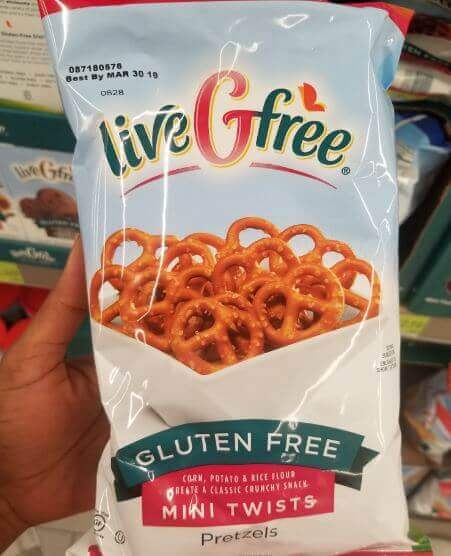
Another breakthrough I had in week three was that something simple can be very satisfying. I don’t always have time to prepare an elaborate meal, which is why I frequently turn to takeout or a food-delivery service to feed me when I don’t want to cook. Since I couldn’t do that during this month, I compromised and dedicated a negligible amount of time and energy to making an easy dinner. I cut up a few potatoes and fried them in a pan with some coconut oil and seasoned salt. They were satisfying, filling, and simple and only took about 10 minutes to cook.
WEEK FOUR
In my first three weeks, I admittedly made a lot of one-off meals (single servings without leftovers), but after inventing my leftovers casserole, I saw the benefit of making large batches and decided to get a slow cooker. While it may not seem like buying a kitchen appliance fits into the money-saving nature of this challenge, it most definitely did—because in addition to the fact that I bought it used at a local thrift store, it allowed me to make more food that was easier to portion and save. I got my 8-quart slow cooker for $10 and quickly began experimenting by throwing all sorts of vegetables in it, turning the cooker on, and just letting it do its thing.
I highly recommend a slow cooker to anyone feeding a family, trying to save money, or wanting to avoid wasting halves of vegetables. When you make a huge slow-cooker meal, the leftovers can be easily portioned out into containers and frozen for future meals. In my final week, I used my slow cooker to make a few different recipes from the list in the link above—including chili, black-eyed peas stew, and even a fabulous chocolate pudding cake! I still bought bagels and bananas to have for breakfast each day, but thanks to my magical new slow cooker, I was able to make batches of chili and stew for lunches and dinners through the week.

As my final week of buying all my groceries at my 99 Cents Only store came to a close, I was nothing short of thrilled about the amount of food in my house, the amount of extra money in my wallet, and my brand-new perspective on food and eating. I genuinely believe that in just one month, I became a more creative cook, a more frugal shopper, a healthier vegan, and a more conscientious eater. I never expected that reducing my budget so significantly would result in larger portions, healthier meals, and less stress as a result of food preparation and better time management (making time to cook because I couldn’t just order delivery). When I started this challenge, I felt sure that the moment it ended, I’d celebrate by going out to eat. But the day after it was over, I went right back to the 99 Cents Only store, bought just $5 worth of ingredients, and made myself a celebratory meal of grilled Portobello tacos with only one supplemental condiment from my fridge: vegan ranch dressing.
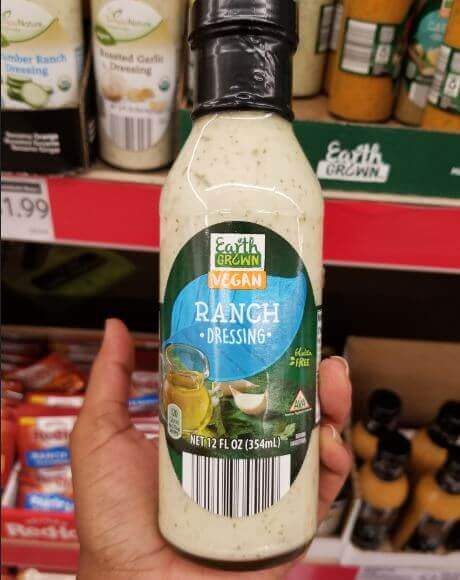
This project went beyond eating vegan on a low budget. For me, it was also about enjoying the foods I love, being able to share food-related posts and pics on social media, and maintaining certain habits that I enjoy without ever feeling deprived. Beyond the realization that helping animals by eating vegan can truly be very affordable, I learned that I can easily make dishes that I’d normally order at a restaurant for a fraction of the cost. Now that the challenge month is over, I plan to continue shopping for more than half my groceries at the discount store, while also indulging in some of my usual foods—such as vegan meats, condiments, sweets, and meals at my favorite restaurants.
Discount stores like 99 Cents Only make it even easier to eat vegan on a tight budget, and many basic vegan staples like fresh fruit, bread, peanut butter, pasta, canned vegetables, and snacks are even available at 7-Eleven and some gas stations and minimarts, too. For more ideas on making healthy meals on a budget, check out these vegan recipes for under $3 each.
Text VEG to 73822 to get the latest vegan lifestyle tips, recipes, and urgent action alerts texted right to your phone.
Terms for automated texts/calls from PETA: https://peta.vg/txt. Text STOP to end, HELP for more info. Msg/data rates may apply. U.S. only.



